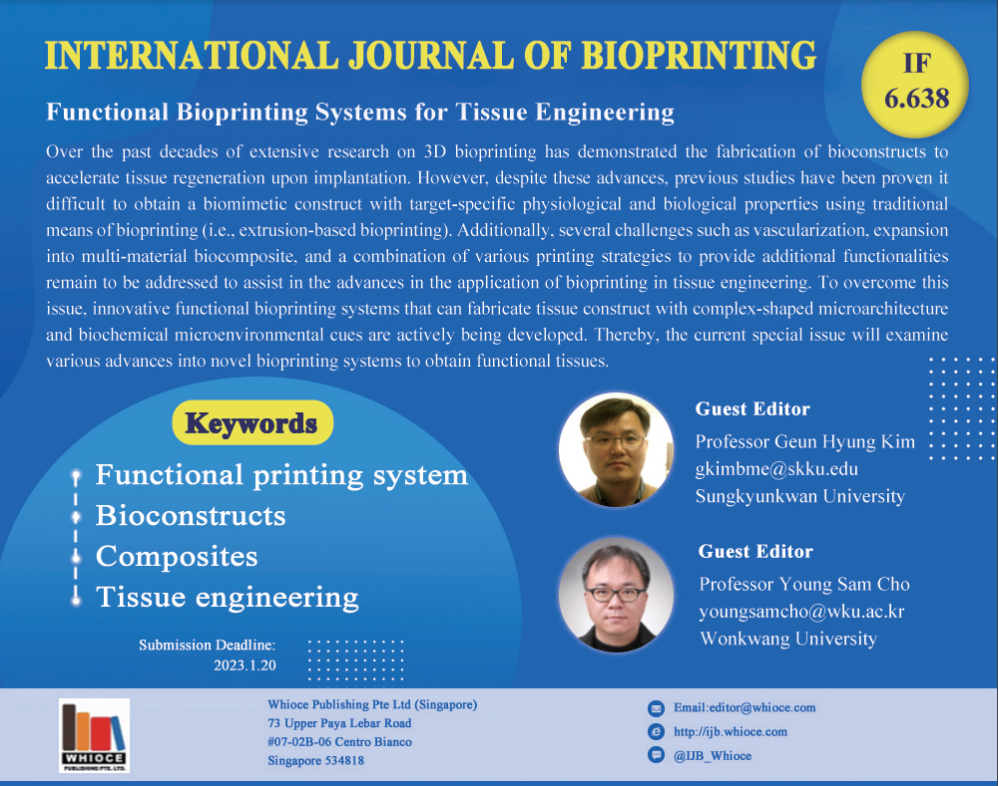
Dear Colleagues
Over the past decades of extensive research on 3D bioprinting has demonstrated the fabrication of bioconstructs to accelerate tissue regeneration upon implantation. However, despite these advances, previous studies have been proven it difficult to obtain a biomimetic construct with target-specific physiological and biological properties using traditional means of bioprinting (i.e., extrusion-based bioprinting). Additionally, several challenges such as vascularization, expansion into multi-material biocomposite, and a combination of various printing strategies to provide additional functionalities remain to be addressed to assist in the advances in the application of bioprinting in tissue engineering. To overcome this issue, innovative functional bioprinting systems that can fabricate tissue construct with complex-shaped microarchitecture and biochemical microenvironmental cues are actively being developed. Thereby, the current special issue will examine various advances into novel bioprinting systems to obtain functional tissues.
State-of-the-art techniques for promoting tissue regeneration: Combination of three-dimensional bioprinting and carbon nanomaterials



